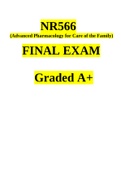Samenvatting
Summary Advanced Immunology Janeway test 2) Dendritic cells in immunity and tolerance
- Instelling
- Universiteit Van Amsterdam (UvA)
This is a small summary for the course advanced immunology from the master biomedical sciences at the UvA. It includes all the information you need for one of the 9 Janeway tests during this course. Look out for the bundle, because that's a lot cheaper!
[Meer zien]














